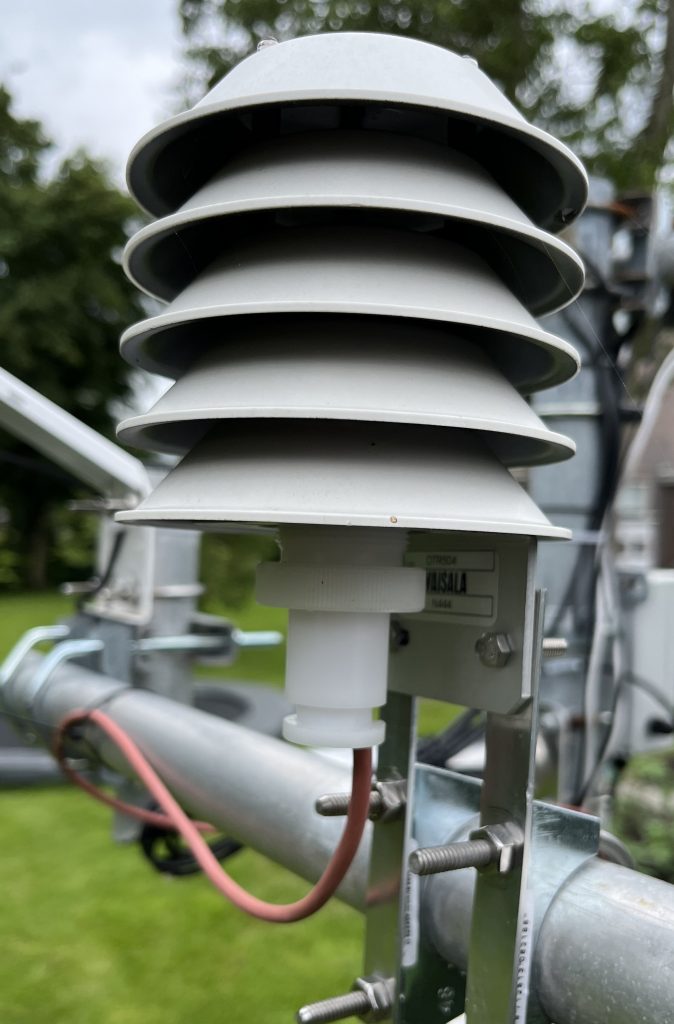I’ve pretty much settled on my current radiation shield setup. Based on personal research alongside that of others, I do not think I will find an affordable radiation shield that can outperform the Barani MeteoShield Pro. Whenever I have doubts about radiation errors, the results produced by sensors inside my actively ventilated Apogee TS-100 will indicate if the Barani is having a hard time with the current conditions. Sometimes that will be the case. More often than not the Barani and Apogee shields will both show limited heating while other shields like the Davis 7714 and MetSpec RAD14 are clearly in trouble.
So I haven’t had any plans to expand my setup. But recently I was able to obtain a Vaisala DTR504 radiation shield second hand in excellent condition. It was a bargain I just couldn’t ignore.
The DTR504 is part of a the DTR500 series by the Finnish company Vaisala. Besides the 5-plate DTR504 there are also 9- and 12-plate versions available. As you can see in the image below, the DTR504 is tiny. It’s 10 centimeters in height and fits into my hand.
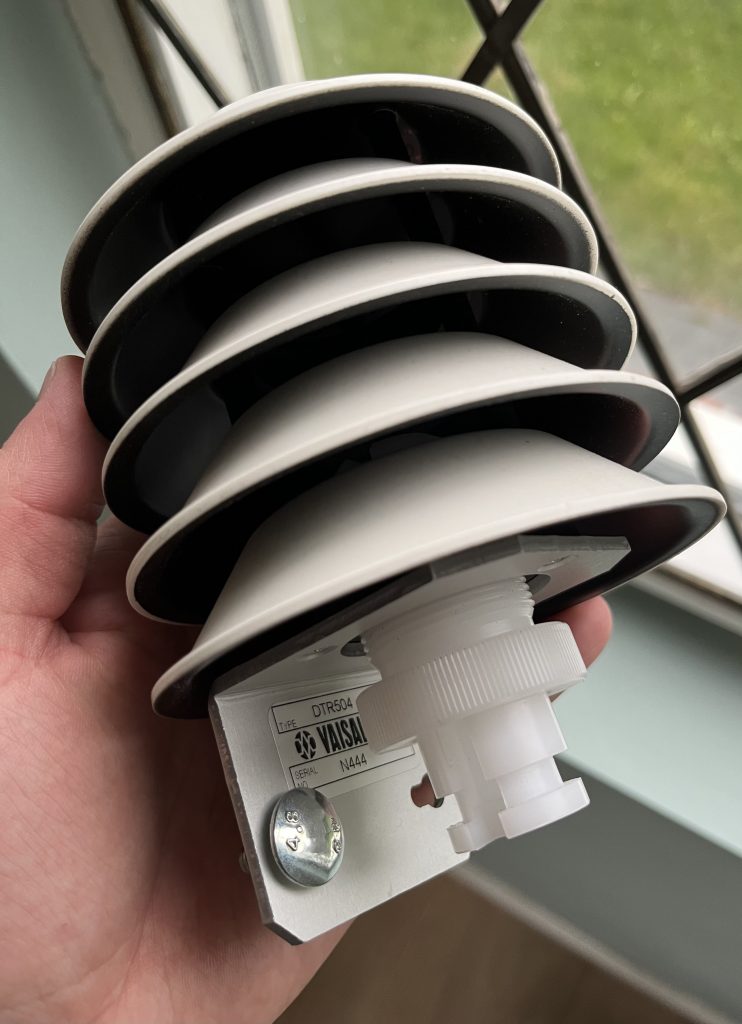
Like most properly designed radiation shields, the inside is painted black. This limits radiation from reflecting off the inside of the plates and hitting the sensor. Compared to other shields, the room between the plates is relatively large. So large that it’s possible to actually see the sensor in place after fitting it. This, I suspect, is not optimal. I’d speculate that the wider the openings are, the more radiation can slip through towards the sensor. Even though the shield itself is from a serious company like Vaisala, this is the cheapest version of the model and I’m not expecting too much.
Because the shield is small, there is not enough room to fit one of my SHT35 sensor probes. I opted for a PT100 sensor probe. This allows me to compare it with similar PT100 sensors inside my Barani MeteoShield Pro and an Apogee TS-100.
So how did the DRT504 fare in my completely unscientific comparison? The short answer: not terribly spectacular, but it’s not the worst either.
Let me share some graphs, which mostly speak for themselves. In each graph, the sensor inside the Vaisala shield is shown in teal.
This is the temperature graph for today.
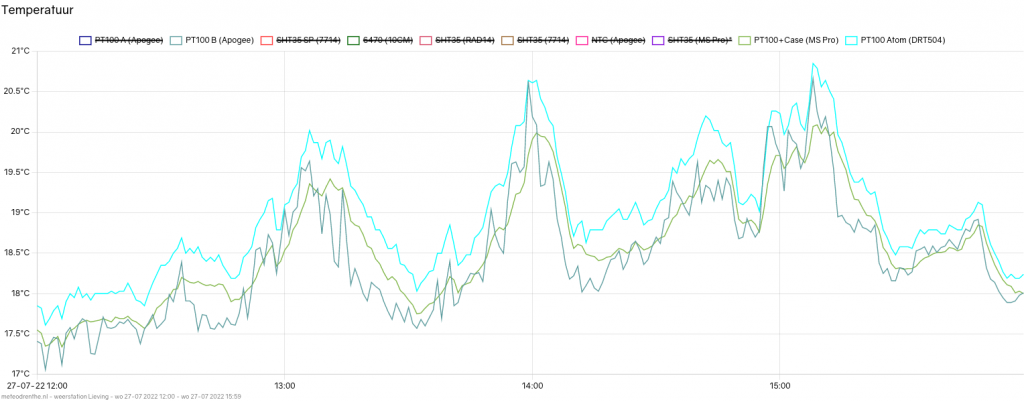
And the solar radiation graph.
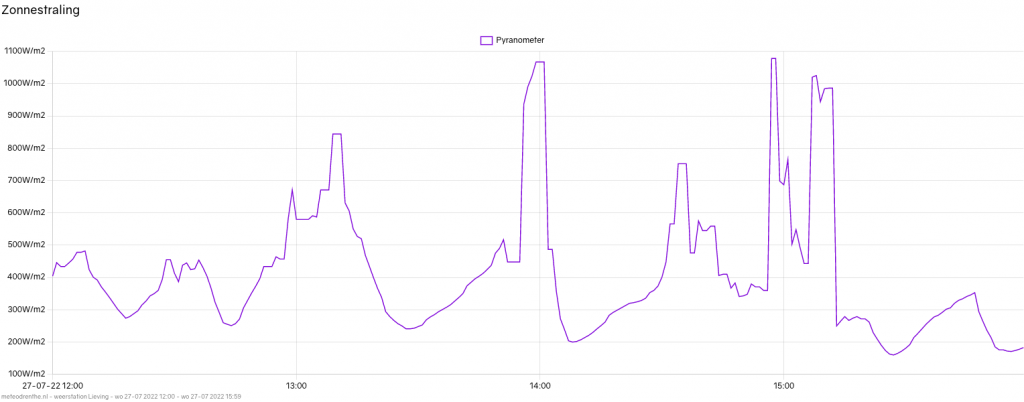
This shows the DRT504 consistently well above the two other sensors at between 0,4 and 0,7 degrees higher.
Without any solar radiation, this is not the case. At night, the sensors inside the Vaisala and Barani shields agree with each other. (The other sensor is a bit more erratic, but that’s because it’s an actively ventilated shield)
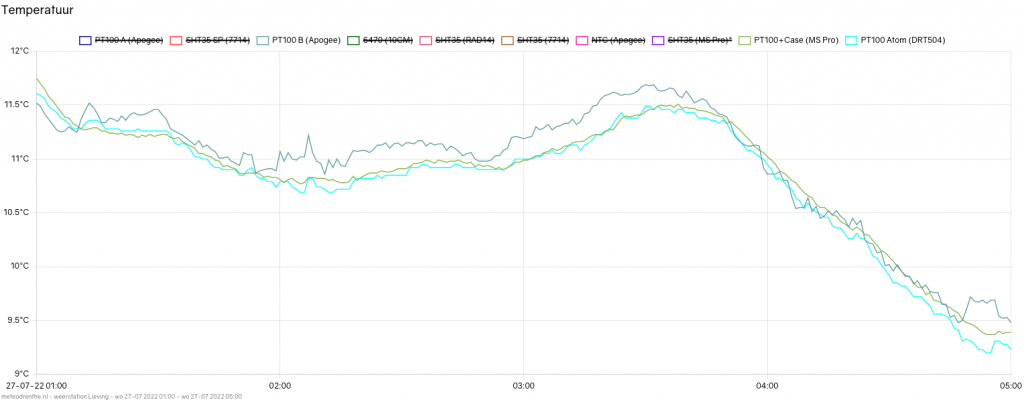
The Vaisala starts reading higher pretty much as soon as temperatures start to climb early in the morning. A little bit at first, but the pattern from the first graph emerges within an hour or two.
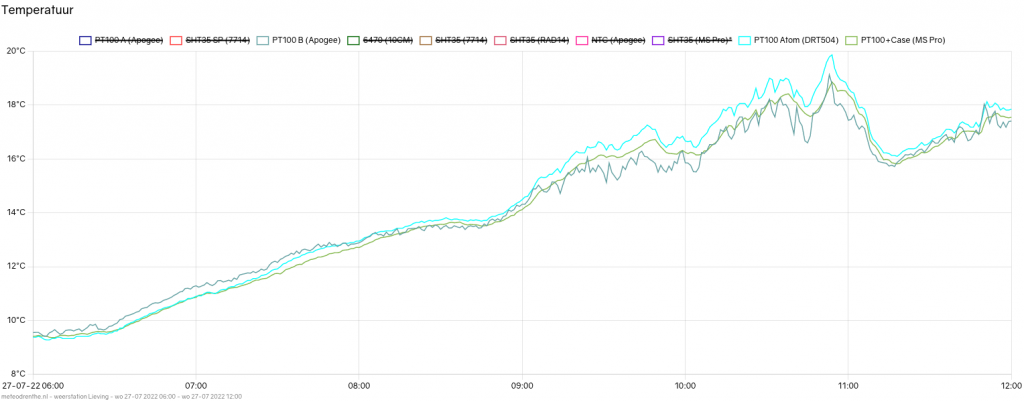
The graphs shown until now are for circumstances with decent natural ventilation with, with wind speeds consistently around or over 1-2 m/s.
What happens when wind speeds are virtually non existent? July 18th of this year saw a few hours when all my passive radiation shields suffered from overheating. As happens more often, at the end of the day winds drop off. In July, solar radiation is still high at that time.
For this comparison I will include all my sensors in a passive shield. Note that this makes the results even less reliable than when comparing identifical sensor types. But I do think these impressions are not entirely uninformative either.
This is the latter part of the afternoon for July 18th.
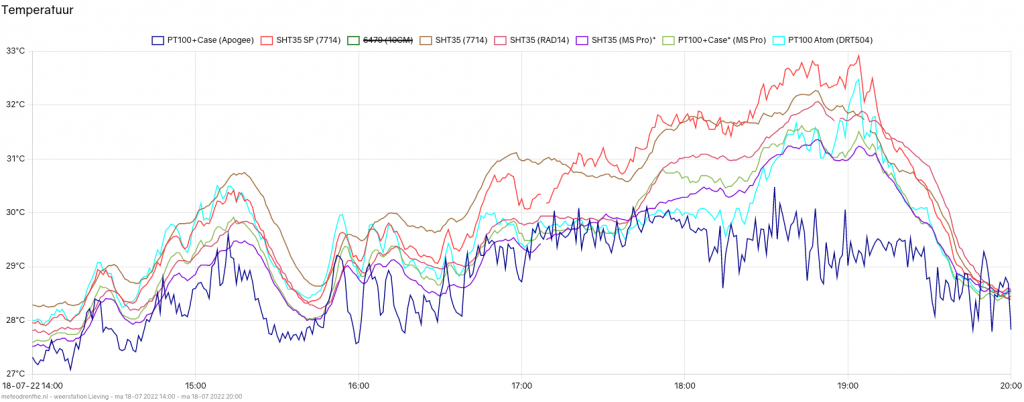
The dark blue line is the actively ventilated sensor and is the best indiciation for the actual temperature at the time. It is obvious when the passive shields start hurting. Where does the DRT504 fit in? The two Davis 7714 shields (red and brown) are in worst shape. They were already overheating around 1 degree most of the afternoon, peaking at 3 degrees for almost an hour. The RAD14 comes in second here. The Vaisala seems to be doing OK for a while, and ultimately spikes a full degree around 19:00. I should add that an advantage for the DRT504 here is that it’s small, and it was partially shaded by other radiation shields at for a period of time.
More data can be gotten from a day earlier. July 17th had a similar situation, though slightly less extreme.
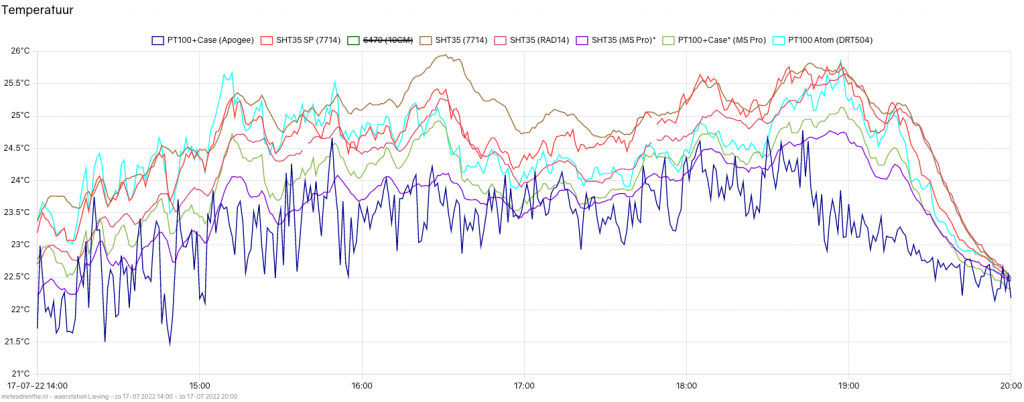
As I said, the Vaisala shield was partially shaded for some time. So for a better impression, the last graph I want to show is for the middle of the day on July 19th. This was a very hot day, with temperatures peaking above 36 degrees.
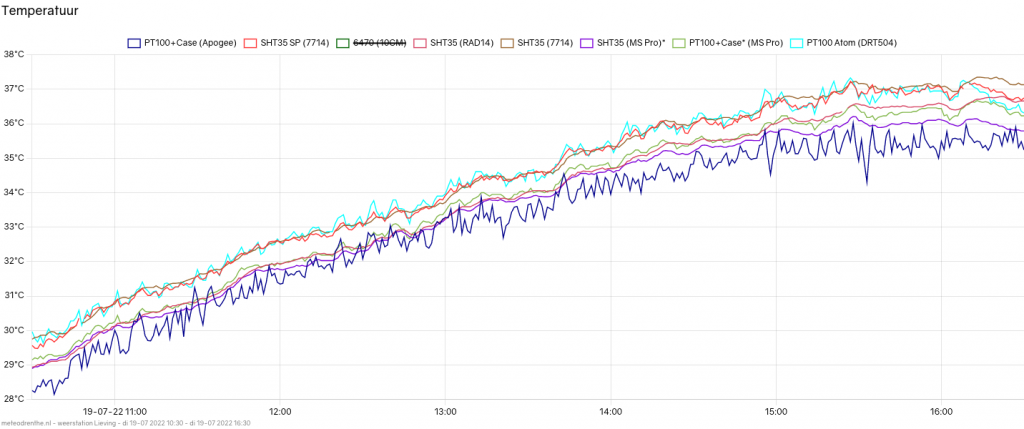
In this graph for the period between 10:30 and 16:30, we see the following order of performance. First the TS-100 is our reference again. The passive Barani shield with an SHT35 sensor (purple) is reading just a few tenths higher during the hottest period of the day. The second Barani shield (green) housing a PT100 is doing a little worse. (This is a test setup where I’m playing a bit with the probe itself, so should not be taken serious) The MetSpec RAD14 with an SHT35 is roughly in the same place as the second Barani. The Vaisala DRT504 is lagging behind in a group with two Davis 7714 shields, one with an SHT35 identical to the Barani and MetSpec shields, one with an SHT35 steel probe configuration. Other days show the Vaisala performing similarly or slightly better than the 7714’s.
At the level of details, as I said, these comparisons should not be taken too seriously. The setups all differ, the shields are not in the exact same location (obviously). From day to day performances vary in ways to easily explained. But I think it’s safe to say that the DRT504 is no competitor for the Barani (this is no surprise) nor even the MetSpec RAD14. If I had to choose between it and the Davis 7714, I would probably opt for the Vaisala. I have never been able to get the Davis shields to perform. Considering the difference in shield performance when using different probe types, I might be able to come up with a setup that would put the Vaisala in a better position. Possibly more on this in a future post.

